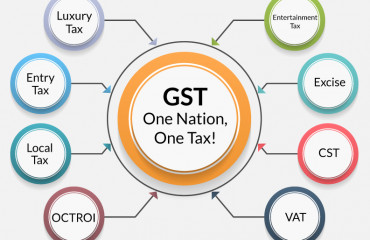
The fifth anniversary of the grand rollout of our goods and services tax (GST) will be celebrated on 1 July. The legislation’s passage in Parliament, ushering in the GST era, was made historic with a special midnight session five years ago. The Prime Minister addressed the nation on live television the next day, which also coincided with Chartered Accountants’ Day.
The fifth anniversary of the grand rollout of our goods and services tax (GST) will be celebrated on 1 July. The legislation's passage in Parliament, ushering in the GST era, was made historic with a special midnight session five years ago. The Prime Minister addressed the nation on live television the next day, which also coincided with Chartered Accountants' Day. Since one of the promises of GST is enhanced tax compliance, thanks to its inbuilt interlocking incentives that deter evasion, the PM warned the black sheep among CAs to desist from looting the exchequer under the guise of clever tax avoidance. Since the memory of demonetization was still fresh, he told CAs that because of data mining, more than 300,000 companies had come under the scanner and a third were found to have been violating Indian laws. By implication, the era of GST would eliminate such tax evasion, and the penalties would be harsh.
The promise of GST was not just leakproof tax compliance and complete electronic filing with real-time reconciliation, but also frictionless commerce across state boundaries, elimination of the practice of intra-company depot transfers (to escape interstate and central sales taxes), and eventually buoyant tax collections, with a virtuous cycle of fiscal benefits for all, thus paving the way for lower taxation rates. This promise remains unredeemed for reasons not wholly attributable to covid, the Ukraine war or external factors. It is due to a faulty initial design of GST and implementation glitches that necessitated frequent tweaks.
Firstly, nearly half of India's national income remains outside the ambit of this destination-based consumption tax; petro products, energy and electricity are not covered by GST. This ups costs, since input tax credit is not available on the high taxes paid on petrol, diesel and electricity. This is particularly harsh on some sections of our services sector. Non-exclusion of certain sub-sectors also means that overall GST rates remain too high, which in turn can tempt tax evaders. Is the present proliferation of excess cash a hint of large-scale transactions staying out of the GST net? Secondly, there are still too many slabs and all too frequent tinkering with them and the rates, leaving too much discretion with the GST Council or the taxman. To date, more than 400 rate amendments have been made. Unsurprisingly, litigation has mounted and is clogging up courts. The mechanism of an advance ruling often used in tax matters is either not available or not working well for GST. Thankfully, an arbitration tribunal is on the cards to speed up dispute resolution. Thirdly, the unpleasant reality of inadequate telecom infrastructure and bandwidth availability in the country has hampered the sort of automation demanded by the GST system. Uploading documents can take a very long time. Mismatches between supplier and recipient details are common. Inadvertent errors cannot be differentiated from deliberate misdeeds. The taxman is unforgiving and legitimate refunds remain locked. Thus, instant and continuous synchronization of vendor and customer data is an unreachable holy grail. At least an adequate allowance has been made to depart from that goal. Frequent rectification is both needed and possible. But there are many wrinkles yet to be ironed out. Fourthly, the administration of e-way bills and interstate GST need an overhaul. It's still burdensome and complex.
But stepping back from these challenges, it is worth revisiting GST's grand promise. The rollout of a unified nationwide consumption tax regime was a landmark development, signifying cooperative federalism. But instead of deepening trust and cooperation, there has been more rancour between the Centre and states. The then finance minister had got all states on board in 2017 to sign up for GST, wherein they surrendered their right to impose sales tax in lieu of a generous five-year guarantee of 14% year-on-year growth in their respective GST revenues. This turned out to be not just too generous, since no state had achieved such a healthy benchmark in its recent past prior to 2017, but it also did not leave any incentive for the states to exert themselves on tax collection. An earlier design to harmonize value-added tax provided for only a partial reimbursement of revenue shortfalls, leaving some "skin in the game" for the states. But many states now simply bristle at any mention of risk or burden sharing. They are asking for the GST compensation guarantee to be extended by five years, which would be fiscally ruinous for the Centre. Some states are now in open rebellion against the very idea of a unified GST. They yearn for the bad old days of tax autonomy with barriers for inter-state trade.
The governance design of GST is also being questioned, since the Supreme Court recently opined that decisions of the GST Council are not binding on states. Voting rights within the Council are not linked to states' weightage in gross domestic product or share of total taxes collected. Hence, the larger states feel outmanoeuvred. The GST design still carries the bogey of a "revenue neutral rate" and is far from the 10% or 12% rate originally envisaged by the Kelkar task force. Meanwhile, the third tier of government—chiefly, municipal corporations—remain starved of funds, even as they face increasing spending obligations to provide basic citizen services. They have the least tax autonomy among the three tiers.
